Early Detection Species of Virginia
Giant Hogweed (Heracleum mantegazzianum)
July 27, 2018 Update: A new giant hogweed guide from Virginia Tech can be found here >>
July 25, 2018 Update: Three locations of giant hogweed have been confirmed. All three occurrences were planted intentionally many years ago. No evidence of spread was found at these sites. The confirmed sites are in Clarke, Rockingham, and Fauquier Counties.
June 19, 2018 Update: Virginia Tech Media Advisory here >>
June 18, 2018 UPDATE: Giant hogweed has been confirmed from one site in Clarke County, Virginia, in a home garden setting. It is not an established naturalized population. Virginia Cooperative Extension is working with the land owner to eradicate it.
In Virginia, several other plant species may be mistaken for giant hogweed. Resources on this page will assist in properly identifying giant hogweed:
Giant Hogweed: Identification and Control
What's the harm?
Warning!!! Do not touch this plant! Giant hogweed poses a serious human health hazard because it exudes a clear watery sap containing photosensitizing agents. Skin contact with the sap, combined with exposure to sunlight, can cause severe burns and blistering.
Giant hogweed also poses ecological impacts by forming tall, dense, and deeply shaded stands that inhibit growth of native species. Soil surfaces under giant hogweed stands become bare and more readily erode in the winter months.
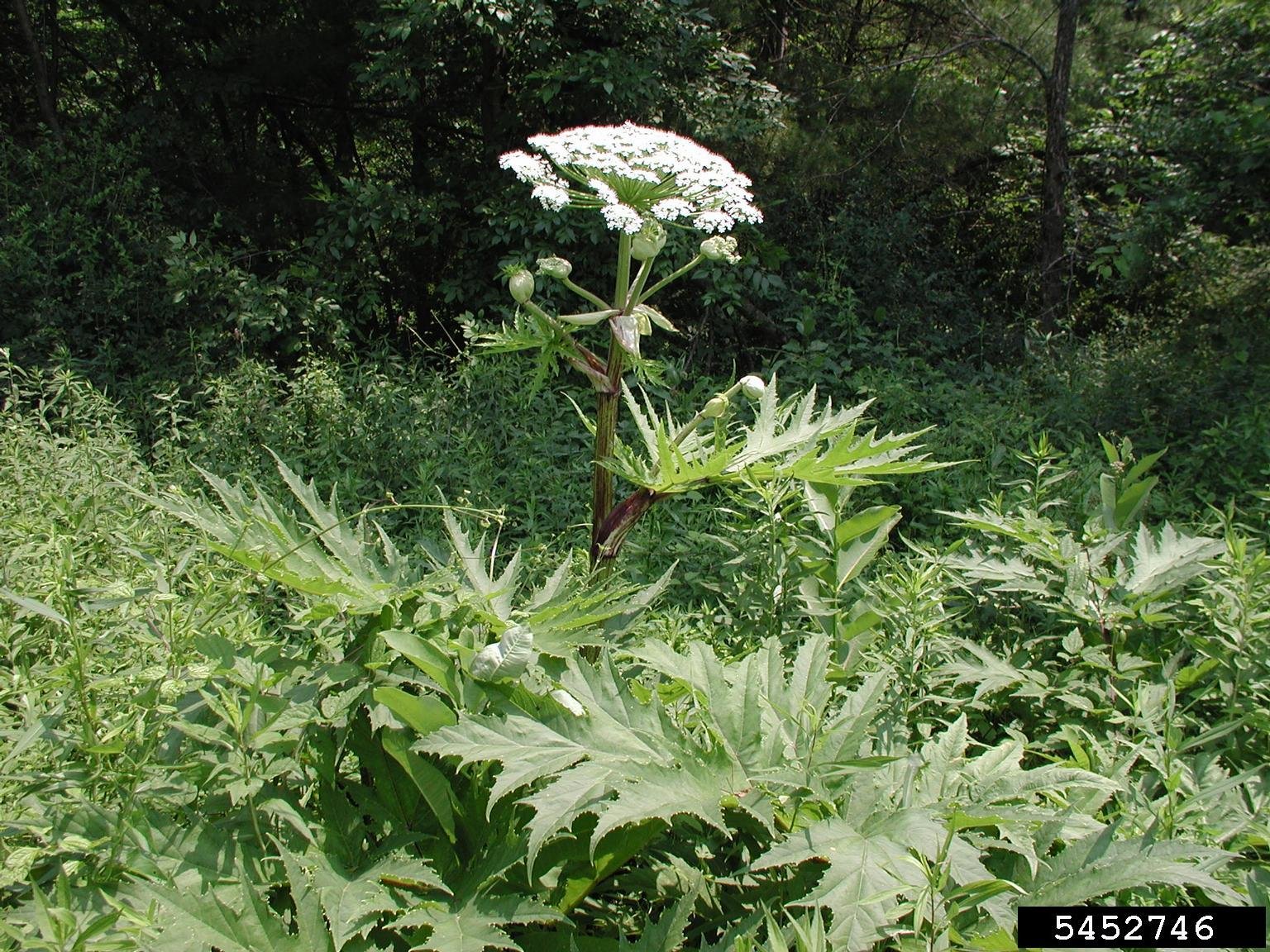
Giant hogweed can grow from 7 to 15 feet in height. Flowering heads are densely packed with tiny flowers and up to 2 feet across.
What is it?
Giant hogweed is a large perennial herb in the carrot and parsnip family, typically six to nine feet (occasionally to 15 feet!) tall. The stem is hollow, two to four inches in diameter, with dark reddish-purple spots and bristles. The leaves are deeply incised and may grow to a width of up to five feet. Flowers are white and clustered into a large, compound umbel up to two and a half feet wide.
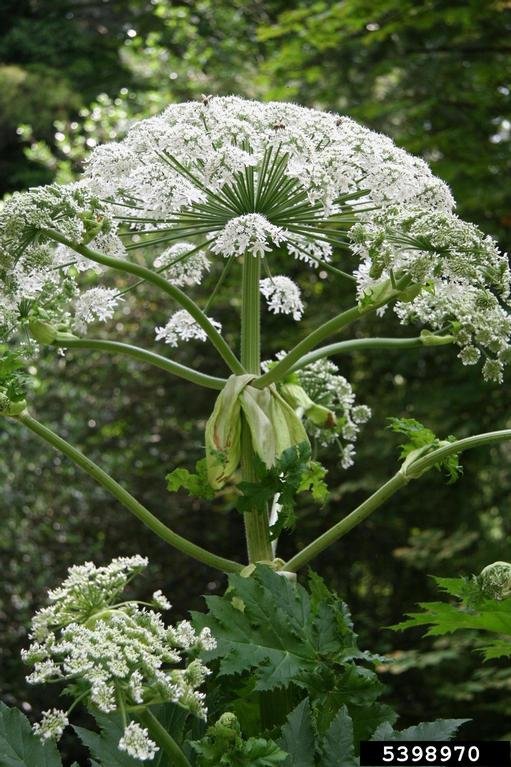
[Photo: Robert Vidéki, Doronicum Kft.]
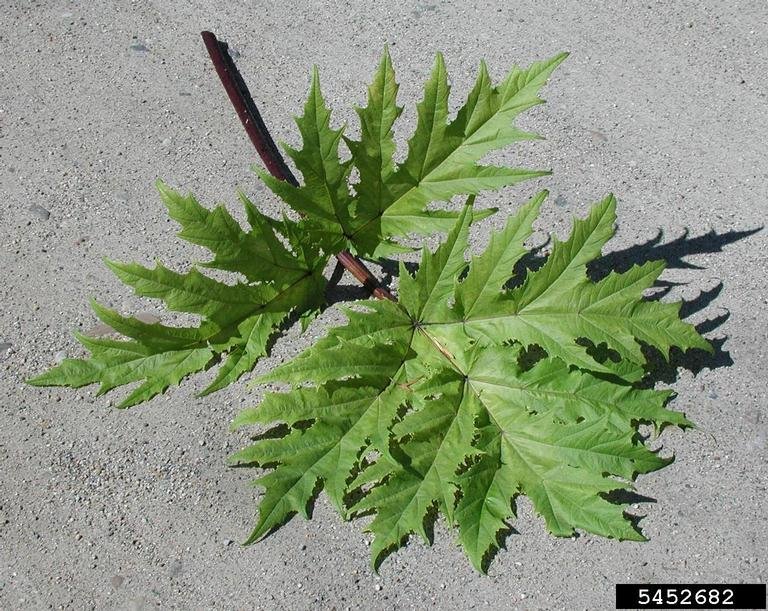
Leaves may be up to 5 feet in width. [Photo: Leslie J. Mehrhoff, University of Connecticut]
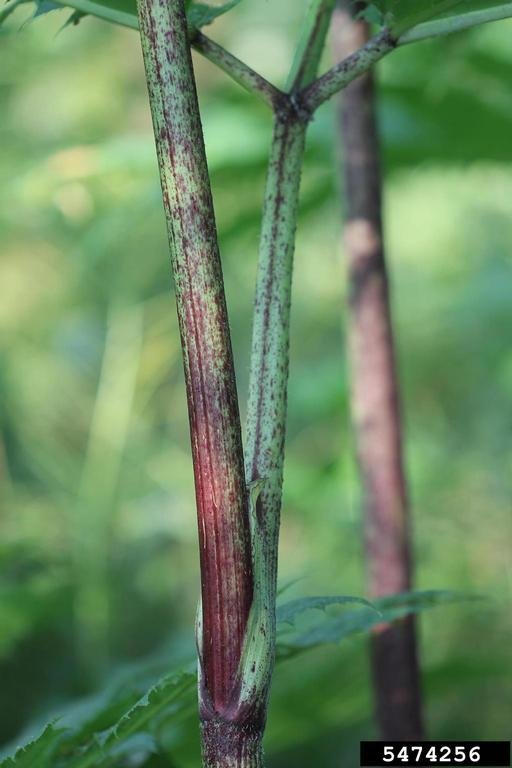
Stems have purplish-red blotches. [Photo: Rob Routledge, Sault College]
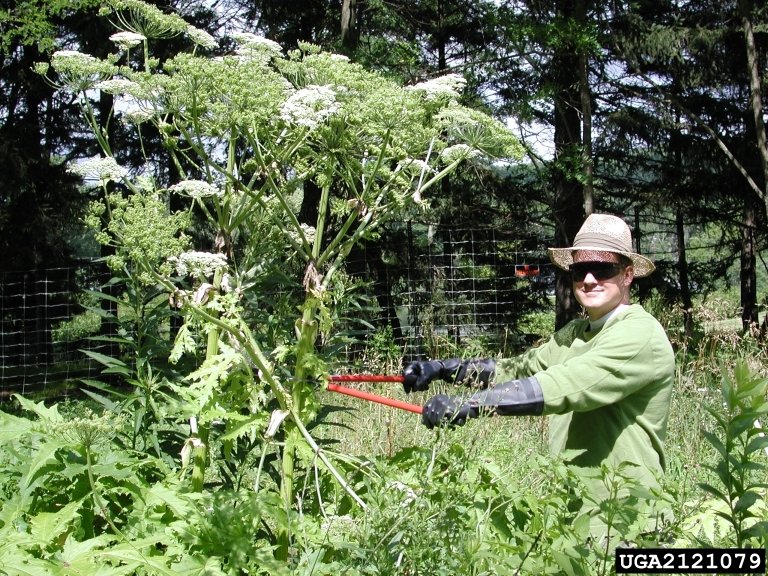
Juice from the thick hollow stems can cause a severe rash. [Photo: Thomas B. Denholm, New Jersey Department of Agriculture]
Species that may be mistaken for giant hogweed include cow parsnip (Heracleum maximum), angelica (Angelica venenosa), poison hemlock (Conium maculatum), and common elderberry (Sambucus canadensis).
How did it get here?
Giant hogweed is native to the western Caucasus Mountain range and has been introduced in places all over the world, often by collectors working for botanical gardens. Once introduced, it escaped into natural habitat.
Where is it now?
In the United States, naturalized (wild) populations of giant hogweed are found in the Pacific Northwest and the northeast states of Maine, New York, Massachusetts, Connecticut, and Pennsylvania. It is also reported from one county in North Carolina.
[Map data from EDDMapS.org] See the USDA range map here >>
What can be done?
Avoid exposure of skin to giant hogweed!!! When handling giant hogweed, be sure to use appropriate precaution by wearing protective gear – coveralls, rubber gloves, eye protection, etc. Do not mow or otherwise cut to control the plant mechanically; this increases the risk of exposure to the plant’s sap, and its roots will readily send up a new stalk. Place all plant parts inside heavy duty garbage bags for disposal.
Glyphosate-based herbicides provide control of giant hogweed. Plants should be treated early in the growing season before they are taller than two and a half feet.
How do I report a sighting of giant hogweed?
Look carefully at the photos on this page and here >>. If you think you have found giant hogweed, take digital photos of the leaf, stem, and flower, and contact your local Virginia Cooperative Extension office here >>
Where can I learn more?
Read more about the biology, threats, and control of giant hogweed here >> and here >>
Image Credits
University of Georgia, Bugwood.org
 Virginia Invasive Species
Virginia Invasive Species